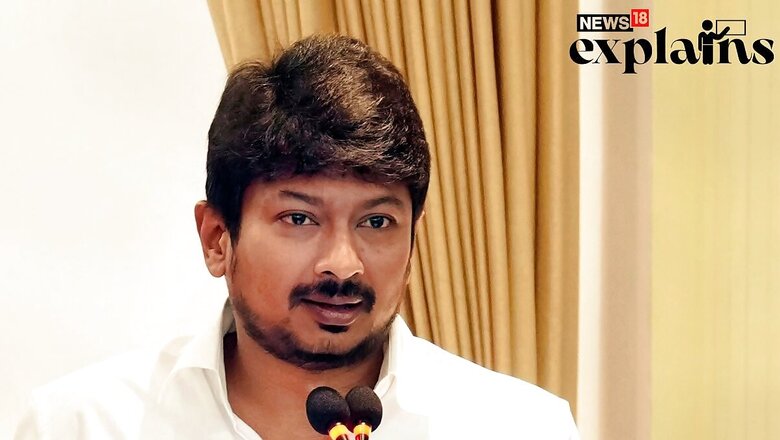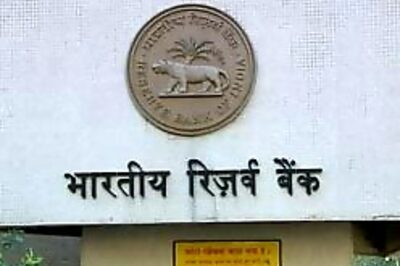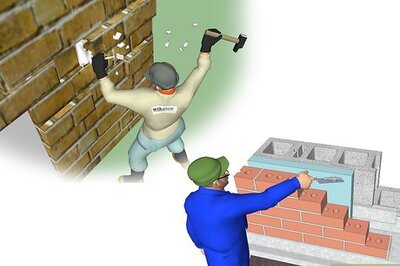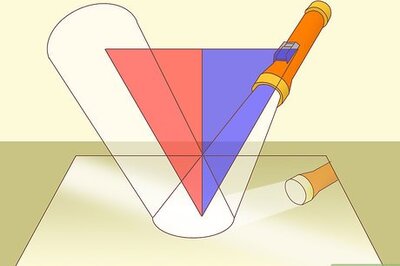
views
Tamil Nadu minister Udhayanidhi Stalin has created a controversy after he likened the term ‘Sanatana Dharma’ to diseases like dengue and malaria and said that it should not just be opposed, but “eradicated".
Udhayanidhi, who is also Chief Minister MK Stalin’s son, made the comments at a ‘Sanatana Abolition Conference’, where he claimed that Sanatana dharma is against social justice and equality.
The statement invited sharp criticism from BJP leaders and triggered a massive backlash on social media, with many people calling for a case to be filed against the minister.
BJP’s Amit Malviya has called Udhayanidhi’s comments a ‘genocidal call’ and wrote, “Rahul Gandhi speaks of ‘mohabbat ki dukaan’ but Congress ally DMK’s scion talks about eradicating Sanatana Dharma. Congress’s silence is support for this genocidal call."
What Has Udhayanidhi Stalin Said?
According to news agency ANI, Udhayanidhi Stalin said, “Few things cannot be opposed, that should be abolished only. We can’t oppose dengue, mosquitoes, malaria or corona. We have to eradicate this. That’s how we have to eradicate Sanatana."
“Rather than opposing Sanatana, it should be eradicated. The name Sanatana is from Sanskrit. It is against social justice and equality," he added.
In a clarification, he said he never called for the genocide of people who are following Sanatan Dharma.
“Sanatan Dharma is a principle that divides people in the name of caste and religion. Uprooting Sanatan Dharma is upholding humanity and human equality. I stand firmly by every word I have spoken. I spoke on behalf of the oppressed & marginalized, who suffer due to the Sanatan Dharma," Udhayanidhi posted on X.
While Udhayanidhi’s comment has put the DMK, which is part of the opposition INDIA alliance, on the backfoot, here is all you need to know about the Sanatana Dharma, its origins and values.
What is Sanatana Dharma?
According to Encyclopedia Britannica, Sanatan Dharma is used to denote ‘eternal’ or absolute set of duties or religiously ordained practices incumbent upon all Hindus, regardless of class, caste, or sect.
Looking at etymology of the term, the word ‘Sanatan’ translates to eternal and the word ‘dharma’ comes from duty, religion or religious duty. Therefore, the term, Sanatan Dharma, alludes to something which is eternally integral to a living entity.
The religion is said to exist about 6,000 years old though the scholars differ on dating its origins from 3000 BC to 15000 BC. Hinduism is basically a modern adaptation of Sanatan Dharma, which is the oldest spiritual tradition known to humankind.
According to Sanatana Dharma, all the creation of nature and deities share the responsibility of pursuing the eternal duty. It refers to moral and spiritual principles that guide one’s conduct on this planet and determine one’s religious duties.
Origin of Sanatan Dharma
The teachings of Sanatan Dharma are laid out in holy Vedic scriptures. Vedic scriptures consist of the four Vedas, Upanishads, Tantric scriptures, Vedanta Sutras, Itihasas (history), Puranas, etc.
It is also included in Mahabharata which has 1,10,000 four-line stanzas and Ramayana, consisting of 24,000 couplets.
Of all the holy books comprising the Vedic scriptures, the sacred text of Bhagavad Gita is considered to contain its most essential revelations.
Sanatan Dharma is a religion based on rebirth, and some scholars say that the concept of rebirth makes it applicable to Jainism, Buddhism and Hinduism.
It is believed that the concept of Sanatan Dharma was first spoken by Krishna, the Supreme Personality of Godhead and is also registered in Atharva Veda. The Bhagavad Gita also confirms that Lord Krishna had instructed the Science of Sanatan Dharma millions of years ago to Vivasvan, the demigod of Sun. Krishna also instructed the same to Arjuna, once again in the battlefield of Kurukshetra.
Values and Beliefs of Sanatan Dharma
Sanatan Dharma has a set of rules, religious vows, rituals and practices aimed at the service to God. It encompasses a list of duties and practices that all Hindus must comply with. Some of the principles and practices include:
- Virtues: Sanatan Dharma has a set of virtues like honesty, goodwill, patience and generosity.
- Moksha: If the Hindus follow these codes, they will attain moksha, a state of spiritual liberation, Self-knowledge and enlightenment.
- Yoga: The practice of yoga is a vital part of this process as it allows the yogi to achieve a union with their spiritual side.
- Rebirth: Rebirth is an essential concept of Sanatan Dharma and is a code to explain diversity in the world, and uncertainty of life.
- Karma: Karma is a concept that explains an action and its consequences.
- Paap and Punya: Paap refers to sin and comes as a result of dush karma or bad deeds, while punya means good deeds.
Is Sanatan Dharma Against Social Justice?
While Udhayanidhi Stalin claimed that Sanatana Dharma was against the idea of social justice, the social structure is a very significant and controversial part of Hinduism and Sanatana Dharma.
The social structure in the Sanatan Dharma was based on the Varna system, which divides society into four varnas or groups- brahmana (priests), Kshatriya (Kings/administrators), Vaisya (merchants), and Shudra (workers) depending upon their individual nature and inclinations.
The original purpose of the varna system was to ensure that people get what they deserve. Unlike what is believed today, the varna could change and three are enough evidences in the scriptures. The scriptures recommend that a person’s varna or caste is ascertained by his guna (nature) and activities and not solely by the assessment of his birth.
The Varna system categorized individuals on the basis of their qualities and ensured same duties and privileges, which ensured ‘Equal treatment for equals’ promoting social justice.




















Comments
0 comment